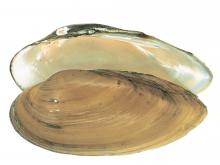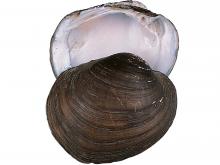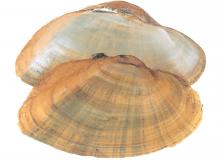Aquatic Invertebrates
Media

Species Types
Scientific Name
Amblema plicata
Description
Sometimes called the blue-point, this mussel species is widely distributed in Missouri rivers and is occasionally found along reservoir margins.
Media

Species Types
Scientific Name
Fusconaia flava
Description
A widespread mussel that releases its larvae in tiny red packages to attract fish hosts.
Media

Species Types
Scientific Name
Lasmigona complanata
Description
The shell of this mollusk is large and impressive in overall size. Although fairly flat, it can be more than 8 inches long. A large wing on the heelsplitter can be painful if you step on it.
Media

Species Types
Scientific Name
Lampsilis teres
Description
The uniform shell thickness and hard, white nacre made this mussel a favorite for button manufacturing, in the days before most buttons were made of plastic.
Media

Species Types
Scientific Name
Elliptio crassidens
Description
Today found only in the Meramec River, the elephantear has been classified as endangered in Missouri and is a candidate for federal endangered status.
Media

Species Types
Scientific Name
Lampsilis abrupta
Description
This endangered native mussel lives in flowing waters of large streams among gravel and cobble.
Media

Species Types
Scientific Name
Bivalve molluscs in order Unionoida
Description
Secretive and seldom seen, freshwater mussels are extraordinarily diverse in Missouri. We have nearly 70 species within our borders. Many are declining, and several are endangered.
Media

Species Types
Scientific Name
Alasmidonta marginata
Description
The elktoe is one of many Missouri mussels with a declining population.
See Also
About Aquatic Invertebrates in Missouri
Missouri's streams, lakes, and other aquatic habitats hold thousands of kinds of invertebrates — worms, freshwater mussels, snails, crayfish, insects, and other animals without backbones. These creatures are vital links in the aquatic food chain, and their presence and numbers tell us a lot about water quality.





















